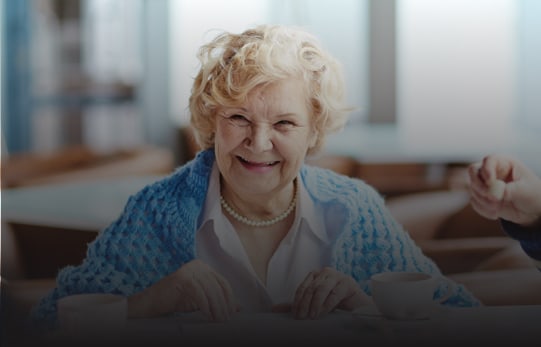Staying active as an older adult is as essential as when you were younger. Maintaining physical fitness and engaging in regular cardiovascular exercise is a gateway to enhanced health, greater independence, and improved quality of life.
Cardiovascular exercises for older adults can include:
- Low-intensity exercises
- Moderate-intensity exercises
- High-intensity exercises
Understanding Cardiovascular Health
As we age, our cardiovascular system undergoes significant changes that can influence how our hearts respond to physical activity. The heart may not pump blood as efficiently, and arteries can lose flexibility, increasing the risk of heart-related conditions.
Common issues such as high blood pressure, arrhythmias, and heart disease become more prevalent with age, underscoring the need for diligence in managing heart health. Fortunately, you can take proactive steps towards health maintenance.
With the right regimen, older adults can enhance heart function, improve circulation, and even reduce the severity or risk of some conditions. This proactive stance can extend the years of vibrant and independent living.
The Benefits of Cardio Exercises for Older Adults
There are many benefits to aerobic activities, such as helping lower blood pressure, reduce cholesterol levels, and manage weight, thereby fortifying overall health. The advantages of cardio exercises extend far beyond the physical. While improved heart health and increased endurance are vital gains, the mental health benefits are equally compelling.
Mentally, cardio exercises play a significant role in elevating mood and reducing symptoms of anxiety and depression. Physical activity prompts the release of endorphins, often dubbed the feel-good hormones, which can alleviate stress and foster a sense of well-being. Regular exercise also leads to a decreased risk of cognitive decline.
The social aspects of group exercise can further enhance mental health outcomes. Whether it’s a brisk walk with friends or a gentle yoga class, these activities create opportunities for connection and community, which are crucial for mental wellness. Cardio exercises, therefore, offer a comprehensive approach to health, addressing both physical and emotional well-being.
Cardio Exercises for Seniors
Based on individual fitness levels, older adults can engage in low, moderate, or high-intensity cardio exercises.
Low Intensity Cardio Exercises
For those looking to incorporate cardio into their routine, low-impact exercises provide a gentle yet effective option. Cardio exercises that minimize joint strain while delivering cardiovascular benefits can include:
- Walking
- Swimming
These activities improve heart health without the wear and tear associated with high-impact exercises.
Moderate-Intensity Cardio Exercises
Moderate-intensity exercises such as jogging, can be adapted by incorporating shorter intervals or alternating with walking breaks. Similarly, dance classes like Zumba can be done at a slower pace, allowing enthusiasts to move to the beat safely. Cycling on a stationary bike is also a middle-intensity cardio exercise.
High-Intensity Cardio Exercises
Older adults who already enjoy more vigorous activities can consider high-intensity cardio exercises. However, for safety, you can do these exercises with some modifications.
Examples of high-intensity cardio exercises include:
- Strength training
- Modified High Intensity Interval Training
The key is to select exercises that align with personal abilities and preferences. Consult with a healthcare provider before starting any new exercise program is essential to tailor activities to individual health needs and limitations. This personalized approach fosters confidence and encourages consistent participation in older adults.
Creating a Cardio Routine for Older Adults
Designing a cardio routine that suits an individual’s needs requires careful planning and consideration. Start by identifying exercises that align with the older adult’s interests and physical capabilities. Whether it’s morning walks or water aerobics, choosing the appropriate activities increases the likelihood of adherence.
Consistency is crucial for reaping the rewards of cardiovascular exercise. Establishing a regular schedule helps engrain exercise as a part of daily life. Start slow and focus on gradual progression, allowing the body to adjust and strengthen over time.
Overcoming Challenges & Staying Motivated
While the benefits of cardio exercises are clear, older adults may face obstacles to maintaining a regular routine. Common challenges include physical limitations, lack of motivation, or safety concerns. Addressing these barriers is essential to unlocking the full potential of cardiovascular exercise.
Starting with realistic, achievable goals can prevent feelings of overwhelm. Celebrating small victories encourages persistence and bolsters confidence. For those concerned about safety, joining a supervised exercise class or working with a physical therapist can provide reassurance and guidance.
Support from family members, caregivers, or exercise buddies can be invaluable. By fostering a supportive environment, older adults are more likely to commit to their routines and celebrate their achievements.
Holistic Approach to Older Adult’s Wellbeing
Cardiovascular health is a critical component of well-being for older adults, offering substantial physical and mental benefits. By incorporating cardio exercises into their routine, older adults can improve heart health, enhance mood, and maintain independence.
For older adults interested in a holistic approach to physical, emotional, and mental wellbeing, contact Somerby St. Vincent’s One Nineteen to learn more about how we support loved ones with personalized services and amenities.











